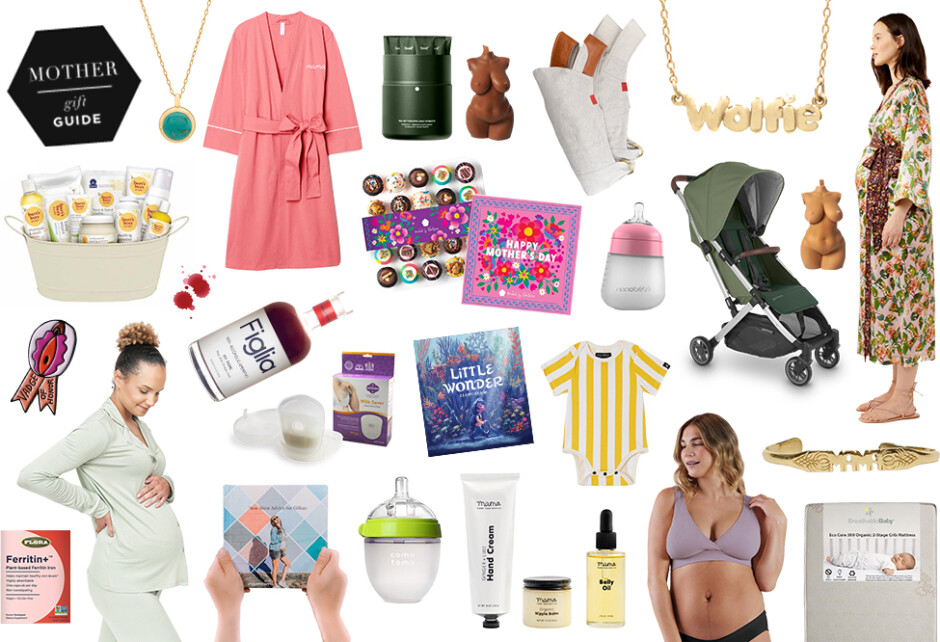
Breastfeeding 101
Written by James Kicinski-McCoy
Photography by Photograph by Jo Frances
Breastfeeding may be one of the most natural instincts and interactions, but that doesn’t mean that it necessarily comes naturally to every mom. Women have been breastfeeding since the beginning of time, but there’s a lot to know when it comes to nursing during those first few overwhelming weeks. That’s why we decided to give you the basics—breastfeeding positions, the best nursing bras, how to burp baby, the do’s and don’ts of drinking booze, and more. Below you’ll find some tips on how to conquer this beautiful experience and find success from day one.
Cradle, Football, What? First things first, get to know the positions: The Cradle Hold is the typical position most people go-to for holding a newborn, where the baby lays lengthwise across your abdomen and you use your arm to support the head and bottom. The Football Hold is great for those who had a c-section. Lay baby face up beside you, parallel to your arm. With your hand cupping his or her head, guide him to your breast. Lastly, the Lying-Down Hold is where you lay on your side with your newborn next to you and guide his or her head toward your nipple. Breast feeding pillows can be extremely helpful for finding the perfect position and added support. For feeding, skin-to-skin contact is best idea, as your baby will be comforted by your warmth, your heartbeat, and your scent.
Latching On. A successful feeding starts with a proper latch. Begin by lining up your baby’s nose to the tip of your nipple to allow him or her to smell your milk. Once his or her mouth opens, quickly and gently lay your nipple on the mid to far back part of your baby’s tongue. This will trigger a nice deep latch. If your little one still doesn’t open wide, lightly touch your baby’s lips with your nipple, which may stimulate her rooting reflex and a wide-open mouth. A good latch should not cause discomfort, you’ll hear a pattern of several sucks, a pause, and then a swallow when he or she is actively feeding. As your baby continues to nurse, she will become more relaxed, then release your breast when satisfied.
Food And Diet. Nursing is an intimate bonding experience that that also meets your baby’s nutritional needs and boosts his or her immune system from the start. Plus you burn approximately 500 calories a day alone by breastfeeding—bonus! However, this means what you eat, your baby also eats. It’s important to stick to a nutritious diet of dark, leafy greens, whole grains, and plenty of water, plus foods containing calcium, folic acid, and iron. But keep in mind that just like kids and adults, your newborn can have intolerances to some foods, even your own breastmilk. If you notice some issues after feeding, work on eliminating certain foods one at a time to help determine the culprit—dairy is often a good place to start. Also, it’s important to note that babies who feed on formula may not be nursing as often, as formula is thicker than breastmilk, therefore it keeps your newborn full longer.
Boosting Your Milk. Babies feed anywhere from 8-12 times a day, sometimes more, so it’s normal to wonder if you’re providing the amount of milk they need. If you’re having trouble keeping up with the demand, first try increasing your water intake, as often times you may be dehydrated. Taking warm showers can also help as heat promotes the flow of milk. Other tips include drinking nursing teas, taking fennel supplements, or other lactation enhancers like Milkmakers cookies. But, the best way to increase milk supply is to remove more milk from the breasts frequently. A great breast pump can be your savior. It’s recommended to pump 15-20 minutes after each nursing session, especially in the morning when your milk supply is at its highest. Overall just remember, keep at it! Frequent nursing is the best natural way to increase milk flow.
Pain And Other Issues. Breastfeeding doesn’t have to mean sore nipples and rock-hard breasts. Right after birth, you start producing colostrum aka “starter milk,” which is full of important antibodies that build your baby’s immune system, but between 2 to 6 days after birth, your milk comes in and your breasts may seem bigger, tender, firm… or engorged. An underwire-free nursing bra and a good lanolin nipple cream are musts to ensure a positive breastfeeding experience and to help prevent pain, cracks in nipples, or bleeding. However, even if you nurse often and use all the right tools, you can still develop some issues. Fight soreness by applying a bag of frozen pees for relief or if you experience greater pain, you could have a clogged duct or be experiencing mastitis. If you’re still having issues, it’s best to go see your care provider to get things checked out or contact your local La Leche League.
Don’t Give Up. Our best advice is to relax! In the midst of everything, it can seem super overwhelming and stressful, but don’t panic. Once you find the most comfortable position for the both of you, master a good latch, and conquer any issues that arise, your baby will be drinking his or her milk like a champ. Sometimes these things take a little extra time, patience, and practice. If you need some extra help, don’t be afraid to ask for help from family, friends, your doctor or doula, or a certified lactation counselor.
When Mama Needs A Drink. Let’s face it, after carrying a baby in utero for 9+ months and learning the ins and outs of new mommydom, you may feel like you need a glass of wine (or a stiff margarita) here and there, we get it. Now you can, but in moderation. Current research shows that the occasional use of alcohol (one to two drinks) does not appear to be harmful to nursing babies, according to Kelly Mom, and that the ol’ “pump and dump” method, does not speed up the elimination of alcohol from breastmilk.
Share this story




